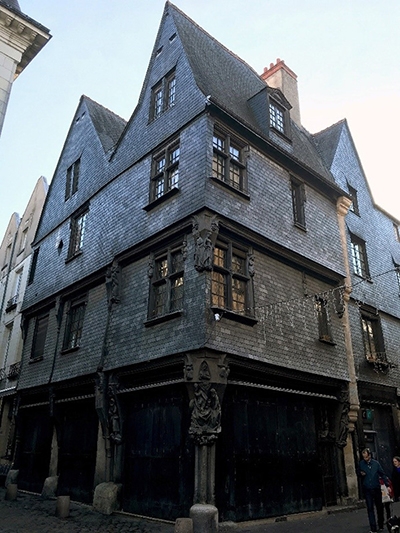Return of the Impossible
A chance encounter with space’s impossible essences
“I dream of a new age of curiosity. We have the technical means for it; the desire is there; the things to be known are infinite; the people who can employ themselves at this task exist. Why do we suffer? From too little: from channels that are too narrow, skimpy, quasi-monopolistic, insufficient. There is no point in adopting a protectionist attitude, to prevent 'bad' information from invading and suffocating the 'good.' Rather, we must multiply the paths and the possibility of comings and goings. No Colbertism in this area! [1] Which doesn’t mean, as it is often feared, the homogenization and leveling from below. But on the contrary, the differentiation and simultaneity of different networks.”
Michel Foucault, “The Masked Philosopher” [2]
Part 1: Essences of impossible space [3]
There are some awesome (like the endlessness of space outside Earth’s atmosphere), yet impossible, spaces described throughout history and in a wide-ranging gamut of interpretations: pictures, videos, novels, poems, and so on. These spaces are full of prototypical characteristics and anti-incandescent values; they are also as charming as anything you can imagine. The spaces themselves challenge the way we understand space, a human invention, by making us think deeply about their conscious, subconscious, and unconscious disturbances. For instance, how when there is one issue with the old radiators in your quaint house, you suddenly begin to question other slight inadequacies of the house; this might cause you to wonder what else in the house is not as it seems. Space is impossibly demanding if you consider how the structure that you live in is quite temporary: like if you don’t remain vigilant to counteract the moisture levels in your bathroom, then the walls will begin to rot. Space, the impossible abstraction, is also hopefully critical of how we understand our lives and how we interact with each other: like how the most endearing criticism is sincere, careful, and accurate, yet mercilessly painful. Nevertheless, once you come to terms with these revelations, they can also be highly productive. The essences of impossible spaces are concealed by a complex system of seemingly endless acts of misdirection: like fantastic artifices, rigorous details, and tender interiors. Paradoxically, it is possible to beautifully illuminate (like an illuminated manuscript) impossible space, but it’s impossible to construct these spaces without an irreversible loss of their sublime nature. Defining an essence of space is impossible; nonetheless, it is possible to wander for a while down this unusual path—modest and perplexing as it is.
 Maison, 2 rue du Change, à Tours (Indre-et-Loire, France). Image from the author.
Maison, 2 rue du Change, à Tours (Indre-et-Loire, France). Image from the author.Behold this house as the setting for a movie. As you move through the camera lens around the outside of this house, you are transported to a mysterious setting with a deep, dark story that reflects this building’s expression. The exterior is very dark, but it shimmers with a hint of something special: it might be an enchantment on the materials, or it might be their age. But as you enter the house, you find that the interior is shockingly larger than what the modest exterior revealed. The imperceptible splicing of the frames and the introduction of architectural space (from the exterior to the interior) creates an impossible space.
Let us take a moment to create a vigilant setting for the use of space. First and foremost, let us not forget that Foucault, who created the preamble for this essay, theorized space as a place for state control and oppression in his demonstration of the panopticon. Additionally, in the modernist ideals for architecture, space is a social code that could accomplish all social and cultural issues, which only gives a false sense of hope. We should not forget that space is used and abused by architects and designers; and only with this understanding can we return to our impossible spaces of mystery.
There is something mysterious in “what lies around the corner.” What you might be feeling is multiplied in intensity by an imaginary number, [4] like an overflow of values, when you leave Earth’s atmosphere. Outer space oozes with mysterious wrinkles and unconcrete virtualities; it is hollow, occluded, and undefinable—read impossible. Outside of Earth’s atmosphere lies such a vast amount of unknown territories that goes on forever and always changing. One such non-earthly mystery is a black hole, a spherical drain-like region in outer space that swallows up any matter that passes by—even a star. The narrator of H.P Lovecraft’s “The Music of Erich Zann” describes a similarly mysterious void outside Erich Zann’s window: “I saw no city spread below, and no friendly lights gleaming from remembered streets, but only the blackness of space illimitable; unimagined space alive with motion and music, and having no semblance to anything on earth.” After the candles are extinguished, the narrator realizes that he is in a space that has awakened his senses, compelled him to action, and frankly given him something to think about. At the precipice of a threshold, there is a zero-length moment for pondering the intricacies of space. Contemplate the horror of being in an escape pod jettisoned out of the spaceship with plenty of oxygen and food but no communication equipment—the silence is deafening in (outer) space’s void. This is a fermentation on the essence of eccentric space that lies just beyond the imaginable.
How is it possible that when two XZ planes and two YZ planes separated by their length and held at 90 degrees, and two XY planes to cap off the top and bottom of the box, are brought together [5] we experience this mysterious thing known as earthly “space”? [6] It is as though we have created a vacuum chamber that in its very essence, is at odds with Nature and supportive of humanity as a source of definition and safety for humans to thrive. It is, even more, telling that if the logician removes any of these planes, the thought experiment fails since Nature, like the mythic Poseidon’s nymphs lulling sailors into the sea, will invade the mind and dissipate the entire logic.
The same could be said about the essence of space here on Earth—yet it is the sound coming out of the silence that creates the horror. The impossible essence that is at odds with silence is like an unknown sound (maybe the rat pups are fooling around?) coming from a forgotten cavity in one’s bedroom wall that overwhelms and confuses the senses. In this manner, it is perplexing what happens by way of nature as it relentlessly confronts architectural space; to say nothing, for now, of the primordial disturbance this produces in humans. Nature is an unrelenting force that provokes humans into a momentary flash of physical or psychical awareness anywhere we find pleasure or discomfort. Furthermore, nature values humans the same as it does penguins in the larger organization of Earth’s ecosystem. Nature dramatically confronts space in Francois Roche’s short film, “concrete[i]land.” [7] As the smoke rises from the huts, scene props shaped like a witch’s fingers, it almost seems as though the mystery surrounding the main character’s fate has directly manifested itself into a dialogue about—to say the least—urbanity, civilization, and architecture. The fictional account is split into “two worlds (upper-condo/highway and below-slum self-organization)." Below is the “genetically diseased autarky . . . where the social contract is a constant work in progress, unstable.” [8] “Concrete[i]land” is only one experiment in a more extensive series of similarly styled short films by Roche and his collaborators. They have made many short films in the larger body of research. This research carefully reveals deep provocations of humanity’s innate resistance (sublimation) by mutinous natural forces and their relational psycho-pathology. This is percolation of the essence of space as a futile hybridization between man and nature.
 Concrete[i]land, Bangkok, Francois Roche, 2015.
Concrete[i]land, Bangkok, Francois Roche, 2015.An example par excellence for a prototype of impossible space is the *poof* closet in the house on Ash Tree Lane from Mark Z. Danielewski’s House of Leaves. The mysteries of the house begin when the main character of The Navidson Record (a story within a story), Will Navidson discovers that the interior dimensions of the house are 5/16” larger than the exterior dimensions. One morning the relatively normal family wakes up to a new closet door in the house, seemingly answering the question to which we have all surely been wondering: how is it possible that the inside is larger than the outside?
To be continued. . .
Notes:
- From the footnotes in “The Masked Philosopher” (referenced below): Jean-Baptiste Colbert, 1619-83, adviser to Louis XIV after 1661, is credited with inaugurating the politics of centralism and tight bureaucratic regulation that has become the hallmark of French society. [Ed.]
- “The Masked Philosopher,” in Foucault Live: Collected Interviews, 1961-1984. S. Lotringer, Ed. Semiotexte, 1989. Pg. 305
- This encompasses both, essences of impossible space and impossible essences of space.
- Consider these fundamental properties of imaginary numbers: [i0 = 1], [i1 = i], and [i2 = −1]
- In this synthesis of unremarkable materials there might be a few operable solid planes and transparent sub-planes punched into the main planes for light, entrance, and fresh air—or you know, standard architectural features.
- These abstract, geometric planes are only stand-ins for an enclosure, skin, barrier, etc. that can completely “wall off” a portion of earths inhabitable air. This is a means to get to the point quickly.
- The name for this short film directly references the J.G. Ballard allegory “Concrete Island” about a wealthy architect trapped on a concrete island after crashing his car off of the interstate. He first tries to escape, then realizes he cannot, and finally accepts his fate and begins a Robinson Crusoe-esque construction to embrace his new environment.
- Francois Roche / M4 / New-territories, “Concrete[i]land,” Scenario. 2015 – http://www.new-territories.com/blog/?p=2161. Accessed on February 21st, 2019.